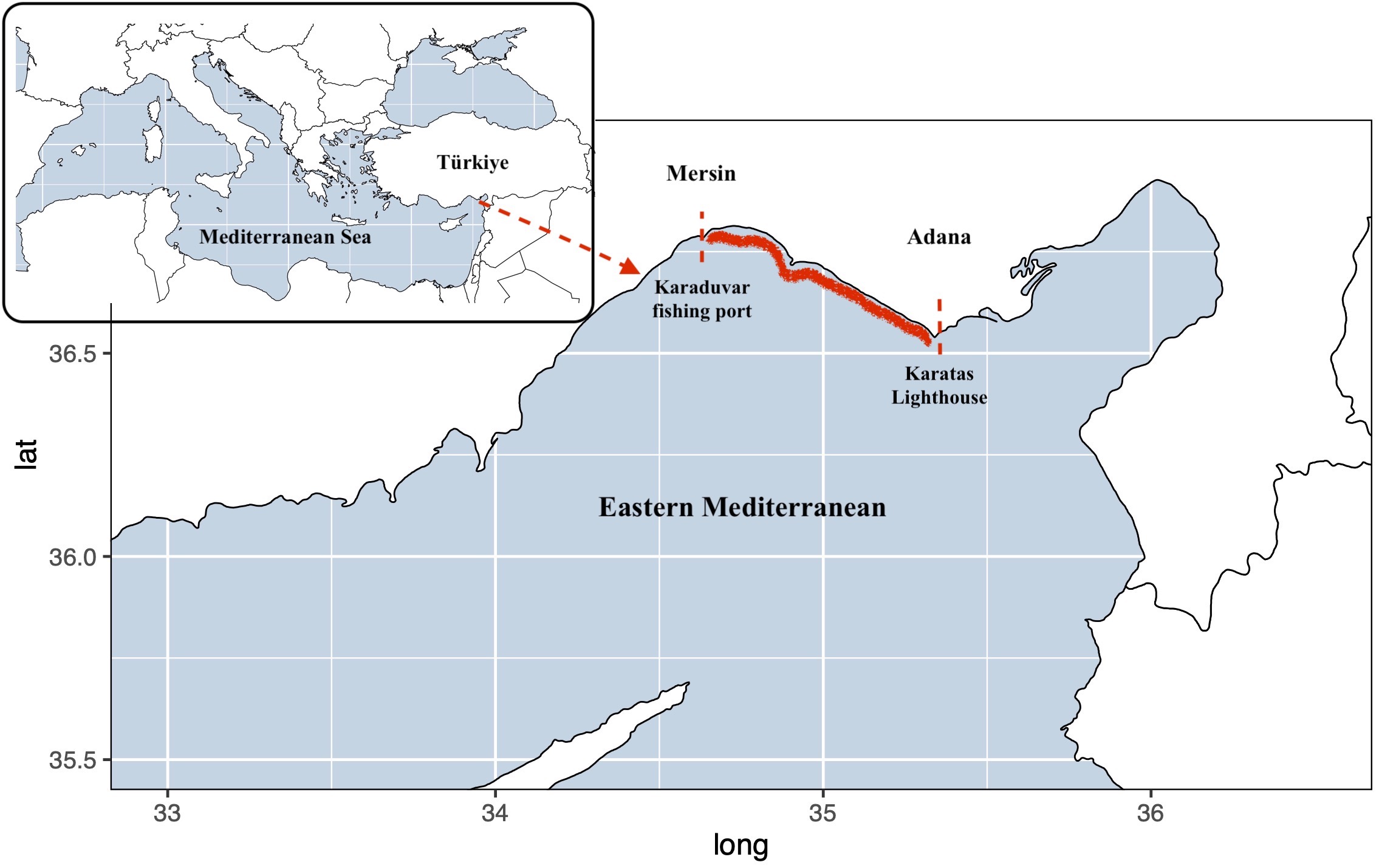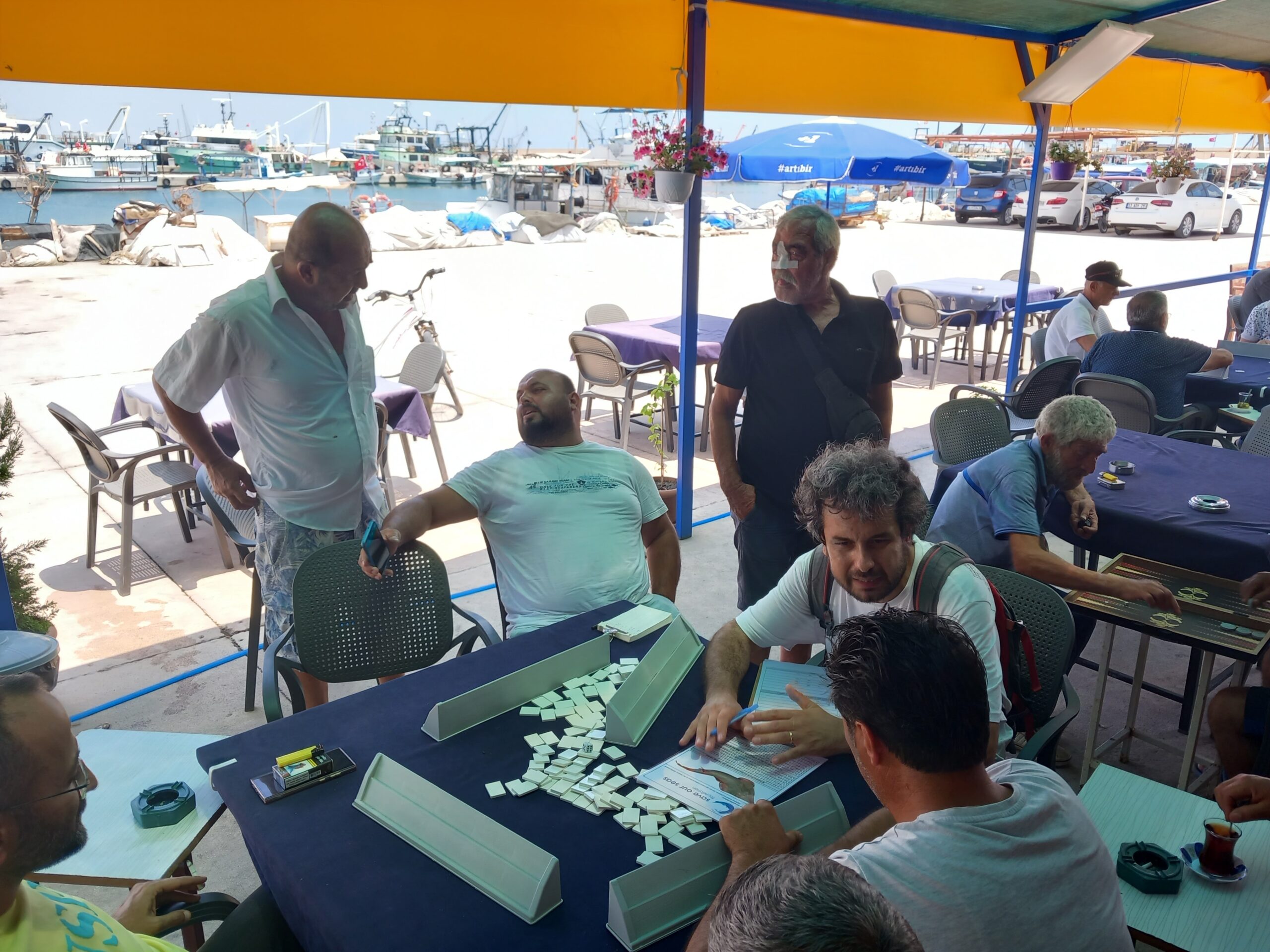Interview
This project encompasses three significant components initially identified: fisheries interviews, conservation education, and fisheries-dependent sea surveys. This blog delves into interviews with resource users, specifically fishers.
This project investigates interactions between guitarfishes, species classified as critically endangered in the IUCN Red List of Threatened Species, and bottom (demersal) trawl fisheries in the Eastern Mediterranean Sea. Demersal trawl fishing is prohibited from 15 April to 15 September in the research area. Out of this fishing season, trawl fishers remain in fishing ports, dedicating their time mostly to repairs preparation for the upcoming fishing season. Therefore, our interview schedule is strongly influenced by this behaviour. Between April 15 and September 15, 2023, we visited fishing ports and conducted interviews with trawl fishers using semi-structured questionnaires to gather information for objective 1 and objective 2. The data for both objectives were collected simultaneously. To streamline the process and prevent confusion, we categorized our questions into two groups: juvenile-related questions (objective 1) and adult-related questions (objective 2). We asked fishers these questions separately while obtaining the necessary information.

Conducting interviews with trawl fishers using semi-structured questionnaires.
The first objective of this project is to delineate the spatial and temporal threat posed by demersal trawl fisheries to juvenile guitarfish (about 30-35 cm in total length) through the application of citizen science based on the Local Ecological Knowledge of the fishers. We conducted interviews with the fishers, and the results highlighted that the area between 36.54 N – 35.34 E (Karatas Lighthouse in Adana) and 36.77 N – 34.64 E (Karaduvar fishing port in Mersin) has a minimum depth of 12 m, a mean depth of 16 m, and a maximum depth of 25 m, situated 3 nautical miles from the coast where is designated as a prohibited zone for trawling.

The area where the interaction occurs between trawl fishers and juvenile guitarfishes, based on the fishers' knowledge. Image © Ismet Saygu
The second objective of this project aims to comprehend the spatial and temporal patterns of discards of large-sized guitarfish and to examine the behaviour of trawl fishers in releasing them back into the sea. A Likert scale was employed to assess the fishers’ attitudes. Fishers reported that there is no specific location or time when a significantly large number of guitarfish is caught. The median, maximum, and minimum numbers of large guitarfish caught in a trawl operation were found to be 3 individuals/haul, 7 ind./haul, and 1 ind./haul, respectively.

Conducting an interview with a trawl fisher using a semi-structured questionnaire.
Fishers explicitly mentioned that they have consumed guitarfish at least once and find it enjoyable only when it is prepared with a sauce (a mixture of tomatoes, spices, and lamb tail fat), They noted that without such a sauce, the flesh of the guitarfish is not as palatable, and there have been no improvements in making its flesh more edible. The fishers’ attitude toward their eating behaviour, ranging from 1 (“I don’t know the taste of guitarfish”) to 5 (“I eat it always”), was calculated as 2.39 (sd: 1.23).
Furthermore, fishers stated that they release guitarfishes under a certain total weight (median: 7.5 kg), which corresponds to the proportion of the flesh, back into the sea. They also mentioned that, although there is no significant commercial demand, they might sell them to middlemen or individuals interested at an extremely low price, with a median value of 7 TL (approximately $0.25).

Conducting interviews at the fishing port with trawl fishers using semi-structured questionnaires.
These results underscore the importance of socio-economic factors in species conservation. Despite the ban on landing this critically endangered species and the realization that it is not worth eating or selling, fishers continue to utilize them, highlighting the complex interplay of socio-economic and conservation concerns.
Now, it is time to determine whether we can validate this information through fisheries-dependent sea surveys. In addition, our current efforts include educational studies for fishers, scientists, fishery controllers, and, particularly, students who are the future stakeholders.
